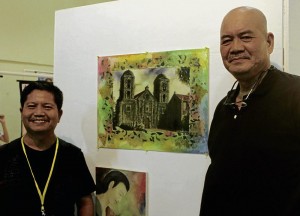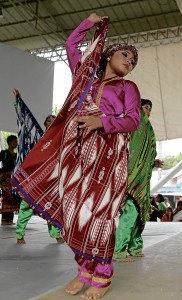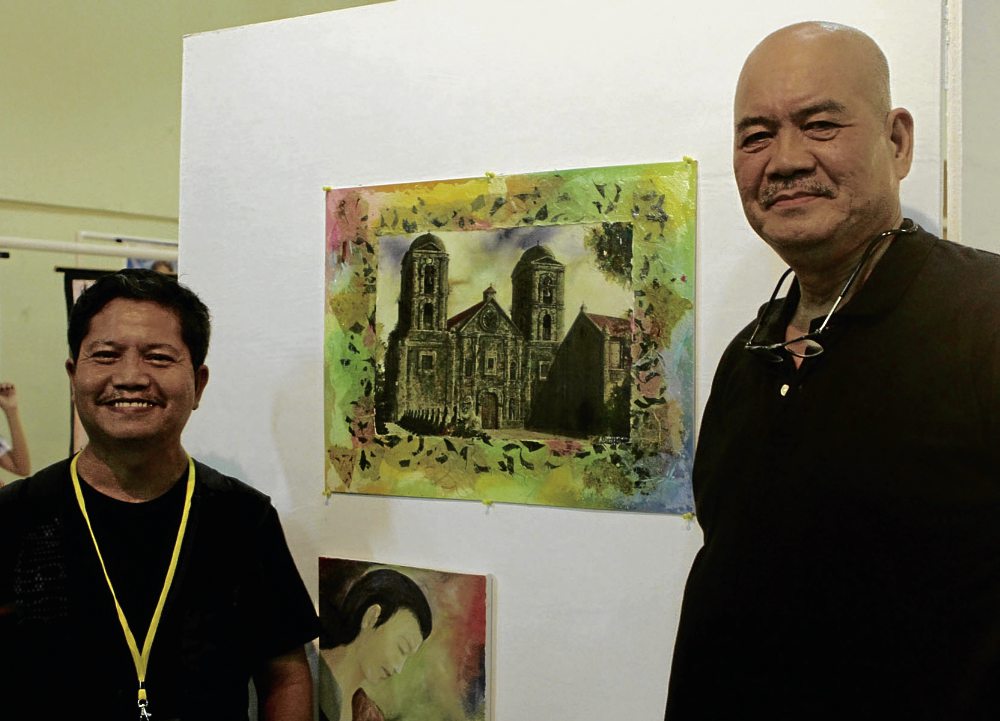
For the first time, the Annual Philippine Visual Arts Festival (Pivaf) extended beyond the shores of Luzon as Zamboanga del Sur served as its host province.
Rookie and veteran visual artists all over the Philippines gathered Feb. 7-11 at the Dao Provincial Government Center, Pagadian City, to conduct contests, discuss relevant issues, and share styles and ideas with fellow artists.
Nemesio “Nemi” Miranda Jr., head of NCCA Committee on Visual Arts, said it was about time they reached out to artists in far-flung areas of the country.
“It was always the artists in NCR and Luzon that got most of the limelight. It’s about time that others get their share, too,” Miranda said.
Celebrating icons
Opening the five days of festivities was a parade of higantes, giant papier-mâché human figures with wood framing, around the vicinity. This was in line with the overall theme of the Philippine Arts Festival: “Celebrating Icons.”
“The higantes are iconic figures in the art scene in Angono, Rizal, and we decided to showcase this art form in Zamboanga del Sur,” Miranda said.
The traditional on-the-spot painting competition on the second and third days was judged by veteran artists Al Perez, Rudolf Gonzales and Raul Isidro. The theme was the painters’ interpretation of peace in the region, which was coincidental with the peace issues in Mindanao.
“The artists used their power of creativity in a place perceived to be in turmoil. Everybody is at peace with art,” Miranda said.
“It is through these competitions that artists from different parts of the Philippines can showcase their work and at the same time learn new styles and insights from their ‘competitors,’” Perez said.

Perez also commended the artists from Visayas and Mindanao for being more confident with their works as they sent them to Manila for contests and exhibitions. “These provincial artists will just send their artwork through courier, and they would be surprised that their artwork would win the contests.”
Perez advised that aspiring artists should always strive to gain exposure through exhibits and develop their niche.
“They must have their own identity, [so that with] one glance at your work, art patrons would already know that it’s your creation,” Perez said.
Landscape sketching, nude painting, and fellowship festivities comprised the fourth and fifth days of the event. It was also considered as the “relaxed” portion of the festivities, since artists had more free time to interact as the pressure of the competition had already been lifted.
The event ended with a musical presentation by Ronulfo “Popong” Landera. Also known as “Kaliweteng Gitarista,” he charmed the crowd with his upbeat and catchy roots reggae tunes.
Artistic conflicts
The gathering of different regional committees of NCCA was also a chance for the members to tackle various issues afflicting the trade. The forum, titled “Methepuk” (Subanen word for “gathering”), sought to address these conflicts and come up with a viable resolution and implementation.
Some of the problems discussed were the artists’ lack of organization by province and lack of public awareness to visual arts due of minimal exposure.
“We have the talent but we don’t have a ‘stage,’” said Miranda. Although Manila has its CCP, he said, it is only the Luzon and NCR artists who are benefiting from it.
Miranda also took notice of how the government placed little effort in tending to the country’s art industry, and how it was not inculcated enough in the curriculum.
“Other countries in Southeast Asia have a dedicated Fine Arts university as well as visual-arts museum,” he said.
Chester Nato, head of the Regional Committee for Western Mindanao, said that some artists capitalized on weaknesses and turned them into strengths.
“There is a shortage of supply of art materials here in Mindanao, so the artists have to make do with whatever materials they have. This forces innovation and creativity on the artists, and eventually leads to their developing their own style,” he said.
In terms of connectivity with artists, Nato shared that the NCCA Western Mindanao already initiated their own Facebook group for their region. “Hopefully others will emulate this, to keep the artists in the regions connected and updated to the latest trends in visual arts.”
In line with their objectives to extend their reaches to other provinces, Miranda said that they aimed to organize the next Pivaf in the Visayas.
“Right now we are choosing among Cebu, Bohol, Iloilo and Bacolod; all of these cities have an active art industry,” he added.













































